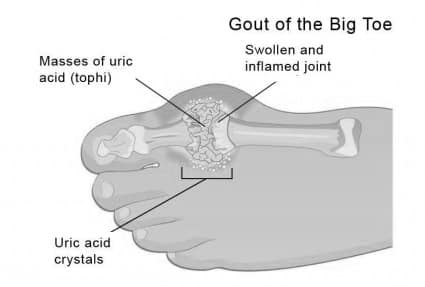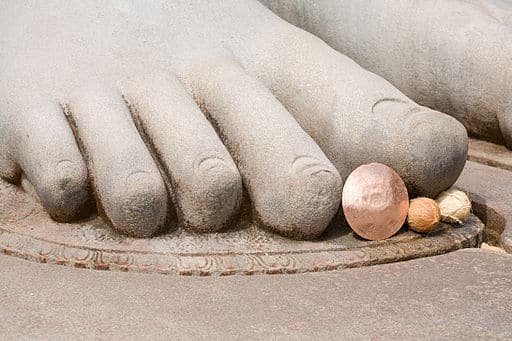Pain in the toes.
Last updated 27/12/2023 by The pain clinics - Interdisciplinary Health
Pain in the toes.
Having pain in the toes and nearby structures can be extremely troublesome. Pain The toes can be caused by several different factors, but some of the most common are overload, trauma, wear and tear, osteoarthritis, muscular failure loads (such as training with a lot of pressure on the toes, including dancing and cross-country skiing) and mechanical dysfunction. Pain in the toes is a nuisance that affects a larger proportion of the population.
Other diagnoses that can cause pain in the toes are gout, gout (affects big toe first), hammer toe / hallux valgus, Morton's neuroma and lumbar prolapse, and many more.
- Also read: Stress fracture in the foot. Diagnosis, cause and treatment / measures.
- Remember: If you have questions that are not covered by the article, then you can ask your question in the comments field (you will find it at the bottom of the article). We will then do our best to answer you within 24 hours.
Some symptoms of pain in the toes
My toes are lazy. My toes are burning. My toes fall asleep. Cramps in the toes. The toes lock. Numbness in the toes. Wounds between the toes. Tingling in the toes. Itching on the toes. The toes curl.
These are all symptoms that a clinician may hear from patients. We recommend that you map your toe pain well before going to your clinician (which you should definitely do for permanent toe pain). Think frequency (how often do you have pain in your toes?), Duration (how long does the pain last?), Intensity (on a pain scale of 1-10, how painful is it at worst? And how painful is it usually?).
Name of the toes
This is called the toes from the big toe to the side:
hallux, also known as the big toe. Second toe, also known as the long toe or 2ndre phalanx. Third toe, known as the middle toe or third phalanx. Fourth toe, known as the ring toe or fourth phalanx. And fifth toe, which is known as the little toe or fifth phalanx.
X-ray of the toes
- X-ray of the foot, lateral angle (seen from the side), in the picture we see the tibia (inner shin), fibula (outer shin), talus (boat bone), calcaneus (heel), cuneiforms, metatarsal and phalanges (toes).
Picture of gout
As you can see, gout affects the big toe first. Uric acid crystals are formed and we get a red and swollen toe joint.
- Read more by clicking here: Gout - Cause, diagnosis and treatment.
Classification of pain in the toes.
Pain in the toes can be divided into acute, subacute og chronic pain. Acute toe pain means that the person has had pain in the toes for less than three weeks, subacute is the period from three weeks to three months and the pain that has a duration of more than three months is classified as chronic.
Pain in the toes can be due to overload, osteoarthritis, muscular tension, joint dysfunction and / or irritation of nearby nerves. A chiropractor or other expert on musculoskeletal and nerve disorders can diagnose your ailment and give you a thorough explanation of what can be done in the form of treatment and what you can do on your own. Make sure that you do not have pain in your toes for a long time, rather contact a clinician and diagnose the cause of the pain.
First, a mechanical examination will be performed where the clinician looks at the foot's movement pattern or possible lack of this. Muscle strength is also examined here, as well as specific tests that give the clinician an indication of what gives the person pain in the toes. In case of toe problems, an imaging diagnosis may be necessary. A chiropractor has the right to refer such examinations in the form of X-rays, MRI, CT and ultrasound. Conservative treatment is always worth trying on such ailments. The treatment you receive will vary, depending on what was found during the clinical examination.
Clinically proven effect on relieving pain in the toes plantar fascite and metatarsalgia.
A recent meta-study (Brantingham et al. 2012) showed that manipulation of plantar fascia and metatarsalgia gave symptomatic relief. Using this in conjunction with pressure wave therapy will produce an even better effect based on research. Indeed, Gerdesmeyer et al (2008) demonstrated that treatment with pressure waves provides a significant statistically significant improvement when it comes to pain reduction, functional improvement and quality of life after only 3 treatments in patients with chronic plantar fascia.
What does a chiropractor do?
Muscle, joint and nerve pain: These are things that a chiropractor can help prevent and treat. Chiropractic treatment is mainly about restoring movement and joint function that can be impaired by mechanical pain. This is done by so-called joint correction or manipulation techniques, as well as joint mobilization, stretching techniques, and muscular work (such as trigger point therapy and deep soft tissue work) on the involved muscles. With increased function and less pain, it may be easier for individuals to engage in physical activity, which in turn will have a positive effect on both energy, quality of life and health.
Exercises, training and ergonomic considerations.
An expert in muscle and skeletal disorders can, based on your diagnosis, inform you about the ergonomic considerations you must take to prevent further damage, thus ensuring the fastest possible healing time. After the acute part of the pain is over, in most cases you will also be assigned home exercises that also help to reduce the chance of relapse. In the case of chronic ailments, it is necessary to go through the motor movements you do in everyday life, in order to weed out the cause of your pain occurring time and again.
Lecture or ergonomic fit for your business?
If you want a lecture or ergonomic fit for your company, please contact us. Studies have shown positive effects of such measures (Punnett et al, 2009) in the form of reduced sick leave and increased work productivity.
Also read:
- Pressure wave treatment of plantar fascite
- Exercises and stretching for heel pain
- Toe spreads in the treatment of sore toes and hallux valgus?
What can you do yourself?
EQUIPMENT - Foot trigger trigger. You will need this to dissolve in the foot muscle or to Implement 5 minute plantar fascitis solution:
Carnation PediRoller: … »(…) Carnation PediRoller can be easily used by following the information leaflet to help stretch the plantar fascia, increase flexibility and reduce pain. The ridged design massages tired feet, reducing tension and stimulating circulation. It can be used as cold therapy by chilling or freezing before use which will help reduce inflammation and comfort pain. »
Daily muscle roll dissolves in the foot muscles, which in turn leads to increased flexibility and less pain - this is done by reducing muscle tension and increasing blood circulation in the area involved.
Training:
- Cross-trainer / ellipse machine: Excellent fitness training. Good for promoting movement in the body and exercising overall.
- Kettlebells is a very effective form of training that produces fast and good results.
- Rowing Machines is one of the best forms of training you can use to get good overall strength.
- Spinning ergometer bike: Good to have at home, so you can increase the amount of exercise throughout the year and get better fitness.
"I hated every minute of training, but I said, 'Don't quit. Suffer now and live the rest of your life as a champion. » - Muhammad Ali
Advertising:

- Click here to read more on adlibris or amazon.
Didn't find what you were looking for? Or do you want more information? Search here:
References:
- NHI - Norwegian Health Informatics.
- Brantingham, JW. Manipulative therapy for lower extremity conditions: update of a literature review. J Manipulative Physiol Ther. 2012 Feb;35(2):127-66. doi: 10.1016/j.jmpt.2012.01.001.
- Gerdesmeyer, L. Radial extracorporeal shock wave therapy is safe and effective in the treatment of chronic recalcitrant plantar fasciitis: results of a confirmatory randomized placebo-controlled multicenter study. Am J Sports Med. 2008 Nov; 36 (11): 2100-9. doi: 10.1177 / 0363546508324176. Epub 2008 Oct 1.
- Punnett, L. et al. A Conceptual Framework for Integrating Workplace Health Promotion and Occupational Ergonomics Programs. Public Health Rep. , 2009; 124 (Suppl 1): 16–25.
Frequently asked questions regarding pain in the toes:
Q: Anatomical overview of plantar nerves in the foot?
Answer: Here you have an illustration that shows the plantar nerves in the foot. On the inside of the foot we find the medial plantar nerves, on the way out to the outside of the foot we find the lateral plantar nerves - in between the toes we find the common digital nerves, these are the ones that can be affected by what we call Morton's Nevrom Syndrome - which is a kind of irritated nerve node. Morton's neuroma syndrome usually occurs between the second and third toes, or the third and fourth toes.









Have always had cold feet due to beta blockers. It gets very easily cramped under my foot when I consciously curl my foot leaves and toes. Lately, I have noticed symptoms in the balls and toes of both feet, and especially when I bend the front foot up and down (toes and toes), it feels as if the skin is too tight. Not troublesome, but a little annoying. Also feels like walking on pillows. So apply to both feet.
I've been hurting my left toe for 2 weeks now. It hurts when I press the toe and move it too much. When I get up, it hurts to put the weight on the big toe. There are no red marks to look at the toe either, can I have something inside the toe? Will this go away by itself?